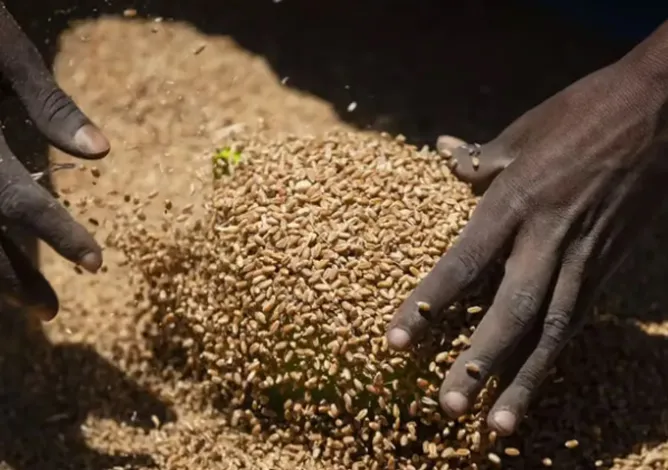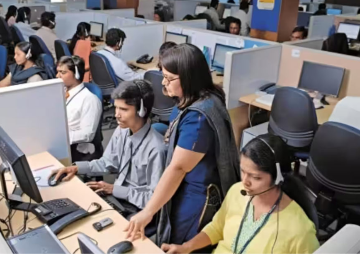It is well known that availability of nutrient dense food in the food basket is critical to combating widespread malnutrition. This is crucial in the Indian context with almost 1 in 3 children being stunted and underweight. Diet diversification has significant impact on the nutritional status of population, specially the vulnerable women and children. Introducing a variety of foods such as fruits, vegetables, pulses can contribute to essential vitamins, minerals, and macronutrients, thus addressing deficiencies that may lead to malnutrition.
India's average protein consumption of 47 grams per day is lowest among Asian and developed countries. Inclusion of protein sources like pulses, legumes, dairy and lean meats, can enhance the quality of protein intake which is essential for supporting growth and overall health. Food fortification with micronutrients is beneficial for vulnerable groups such as pregnant women and young children.
A diversified food ration can significantly improve the nutritional needs during critical stage for preventing stunting, wasting, and other forms of malnutrition.
Diet diversification also has long term health benefits going beyond nutrition outcomes as it reduces the risk of diet-related diseases, and enhances the resilience of communities to health challenges. Fortifying food rations with micronutrients like iron, vitamin A, and zinc can combat specific nutritional deficiencies prevalent in certain populations. However, this approach should keep in view regional and cultural dietary preferences in food ration planning can increase acceptability and adherence. A diversified food ration can significantly improve the nutritional needs during critical stage for preventing stunting, wasting, and other forms of malnutrition. Diet diversification in India's food supply involves promoting a broader range of foods to ensure a balanced and nutritious diet.
Getting PDS Right
In India, the Public Distribution System (PDS) provides wheat and rice to all the states and UTs. Some states/UTs provide additional items like pulses, edible oil, iodized salt, etc. As per the NFSA Act 2013, the entitlement of eligible households shall extend up to seventy-five percent of the rural population and up to fifty percent of the urban population. This is a platform for diet diversification and promotion of nutrient rich foods like millets. Government of India has introduced millets in the PDS and also promoting organic farming of millets to enhance its production and consumption. The supplementary nutrition in the ICDS programme has also integrated millets in their hot cooked meals. However, the implementation of the same is not uniform across as states owing to lack of adoption of millets in PDS in states where rice and wheat are preferred. Also procurement delays, lack of knowledge on benefits of millets and low shelf life has led to low acceptability of millets.
Fortification as defined by FSSAI is "deliberately increasing the content of essential micronutrients in a food so as to improve the nutritional quality of food and to provide public health benefit with minimal risk to health". However, it focuses on raising the amount of one or more particular nutrients in staple meals. The government of India plans to fully implement rice fortification through PDS, ICDS, PM POSHAN/Mid Day Meal Scheme, and other welfare schemes in all states and UTs by 2024.
The supplementary nutrition in the ICDS programme has also integrated millets in their hot cooked meals.
Encouraging the consumption of pulses and legumes, such as lentils (dal) and chickpeas, provides a rich source of protein, fiber, and essential minerals, contributing to diet diversification. The government under the Pradhan Mantri Garib Kalyan Anna Yojana was providing free food grains during the pandemic through PDS. 80 crore poor people received 5 kg wheat or rice and 1 kg of pulses for free every month.
The scheme got an extension till 2028, but food security is still a challenge, with 74 percent population unable to afford a healthy diet. Promoting nutrition/community gardens as a scalable model for diet diversity and food security by increasing the availability of fresh and locally sourced produce. Nutrition gardens enhance dietary diversity by providing micronutrients through constant supply of fruits and vegetables sufficient to meet the family's requirements. Community garden at anganwadi centres and schools can help encourage intake of vegetables and fruits among children and pregnant and lactating women.
The Ministry of Human Resource Development has developed guidelines for school (nutrition) kitchen gardens to help develop skill in children and awareness of nutritious food choices. Kitchen gardens have been set up in government schools in Odisha, Jharkhand and Karnataka, in convergence with horticulture department. The North Eastern states produce and consume local and indigenous foods rich in specific nutrients thus contributing to diet diversification.
Focus On Diversification
To achieve food security and improved nutritional status, diversity in both production and consumption is crucial. Evidence suggests that increase in agricultural diversity is essential for sustainability of agriculture-based communities, accelerate economic progress, and reduce rural poverty. Encouraging the cultivation of a broader range of crops supports sustainable agriculture practices and maintains soil health as monoculture, or the cultivation of a single crop, can lead to soil degradation and increased susceptibility to pests and diseases.
Evidence suggests that increase in agricultural diversity is essential for sustainability of agriculture-based communities, accelerate economic progress, and reduce rural poverty.
However, relying too much just on fortification and supplements may be detrimental. An approach to dietary diversity based on food may be the better course of action. Evidence suggests food based interventions to modify diet quality are effective in combating micronutrient malnutrition. Whatever the method of introducing diverse food in food basket, it is important to raise awareness and to educate the population about the importance of a varied and balanced diet.
Increased awareness can lead to positive changes in dietary habits and contribute to long-term improvements in public health. Along with awareness campaigns, market interventions by setting up of farmers' markets facilitates for the direct sale of a variety of fresh produce are important, thus encouraging consumers to access and incorporate diverse foods into their diets. Agricultural research and development programmes that focus on crop diversification contribute to a more varied food supply, promoting the cultivation of a wide range of crops with diverse nutritional profiles.
Incorporating diet diversification in food rations in India has the potential to significantly improve the nutritional status of the population. However, it requires a comprehensive approach that considers agricultural diversification towards healthier diets keeping in view the regional diversity, cultural preferences, and the specific nutritional needs of different demographic groups.
This commentary originaly appeared in Outlook.
The views expressed above belong to the author(s). ORF research and analyses now available on Telegram! Click here to access our curated content — blogs, longforms and interviews.




 PREV
PREV


